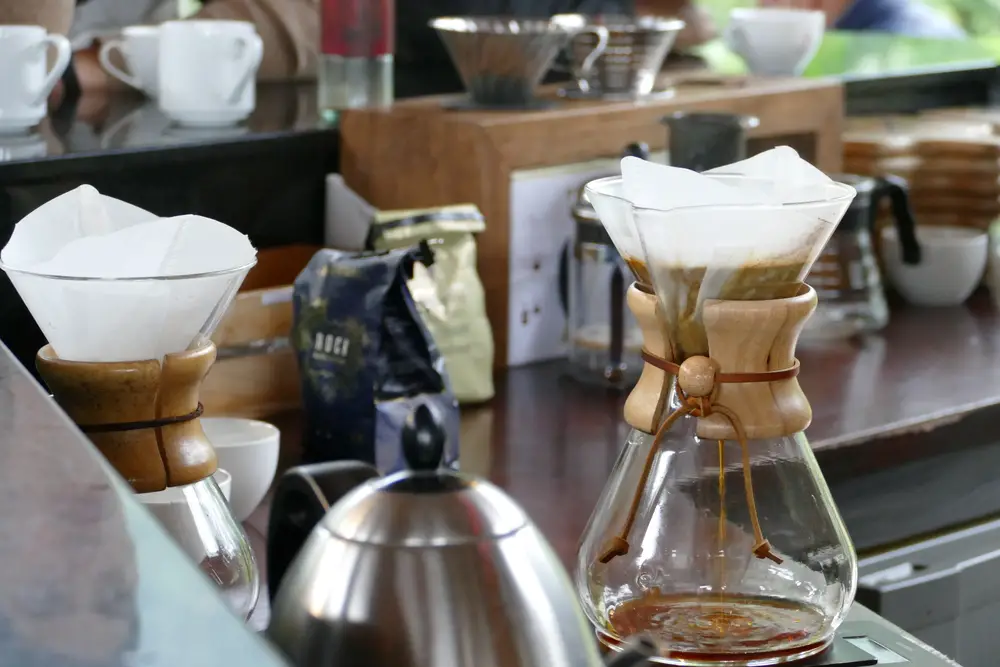Milk is one of the most important ingredients for preparing milk coffee. While it sounds like a very simple task, it really isn’t, as it takes a lot of practice to perfect this technique.
Table of Contents
Alternative milk frothing methods
The most important thing about a latte is the texture of the milk, and to get excellent texture you need the best quality frothed milk. However, since in many cases it is not possible to have the necessary equipment to texturize our drink, today we present you some alternatives for frothing milk at home.
Steaming milk in your espresso machine
Most espresso machines have a steam wand, which is a small tube through which steam passes to texturize the milk.
As a recommendation for frothing milk using this method, it is advisable to use cold milk.
- Before steaming the milk, make sure the steam wand is completely clean and wipe off any residue with a soft cloth.
- Then pour the milk into your steel pitcher. If the jug is too full, it can overflow.
- The lancet should reach the bottom of the pitcher so the milk will be much foamier.
- Before you froth the milk, do a test run. It should not be water but steam coming out of the machine.
- Use a thermometer to measure the temperature of the milk. The thermometer is also placed in the pot. The milk should reach a temperature of 70 °C. When this temperature is reached, you can remove the jar from the lancet.
- Make sure that you clean the lancet immediately so that no dried milk foam collects on the lancet.
- Finally, you should stir the milk a little, preferably in the following way: Tap the bottom of the jug a pad and then make some circular motions; when you have completed these steps, you can follow the steps to prepare a latte.
The disadvantage of this method is that it results in milk with significantly less froth, since the industrial coffee machines that are usually found in coffee shops use more pressure to froth the milk.
Frothing milk with a glass vessel
If you don’t have an espresso machine, there’s no need to worry. There are simpler methods. All you need is a clean glass jar with a lid, you can use an old coffee jar.
As a recommendation for texturizing milk using this method, it is advisable to use warm milk.
- Once the jar is completely clean and dry, add the milk. You should not fill the vessel, because the milk will get a larger volume in the form of foam.
- When the milk is in the jar, you should close it very tightly so that the liquid does not spill out.
- The next step is to shake the jar vigorously for at least two minutes.
- Finally, you can add the milk to the espresso, which you should have prepared beforehand.
This method is very useful and easy to use. You can pour the textured milk over with a spoon or just pour it on top.
Froth milk with a hand or electric whisk
This method is quite simple, you can use some tools that you already have. For example, a whisk or an electric whisk is suitable.
To texturize milk using this method, you can use cold, warm, or hot milk, depending on your taste and the recipe you want to prepare.
- In a clean bowl, add the amount of milk required for your recipe.
- Then beat the milk with the whisk until the volume increases.
Although this is an easy method, the texture of the milk will not be as dense as with the other methods.
Froth milk with a frother
If you are a coffee lover, this can be a very good investment as it is an easy device to carry and use.
It’s easy to pour cold or warm milk into a glass and let the frother do its job.
Froth milk in the microwave
This method is a hybrid of the methods previously presented because you will need a glass jar, but there are a few extra steps.
To texturize milk using this method, you must use cold milk.
- When the milk is in the jar, seal it and shake for a minute.
- Then open the jar and put it in the microwave.
- Finally, in the microwave for 40 seconds on full power.
This creates a fairly dense foam, very similar to that produced by industrial coffee machines.
Steam milk in your French press
The coffee press is a very useful device because, in addition to preparing the espresso, you can also froth the milk.
In a glass or pitcher, pour as much milk as you need.
Then heat the milk in the microwave for a maximum of 40 seconds.
After this time, put the milk in the milk press, which mixes the milk and, thanks to its function, creates a milk froth.
If you decide to use this method, you must keep the French press on low heat and be very careful not to let the milk reach the boiling point.
What kind of milk should you use?
After seeing all the ways to steam or texturize milk, you might be wondering: what kind of milk can I use?
- You can use any type of milk. The problem lies at the moment of frothing or texturing, which can take more or less time and depends on the experience of the barista.
The texturing steps are the same for all milks, they should not be prepared differently, but experienced baristas always recommend using whole milk as it is the only milk that bubbles and gives the milk a better texture.
In summary, you can use any milk for texturing, but use whole milk for best results.


